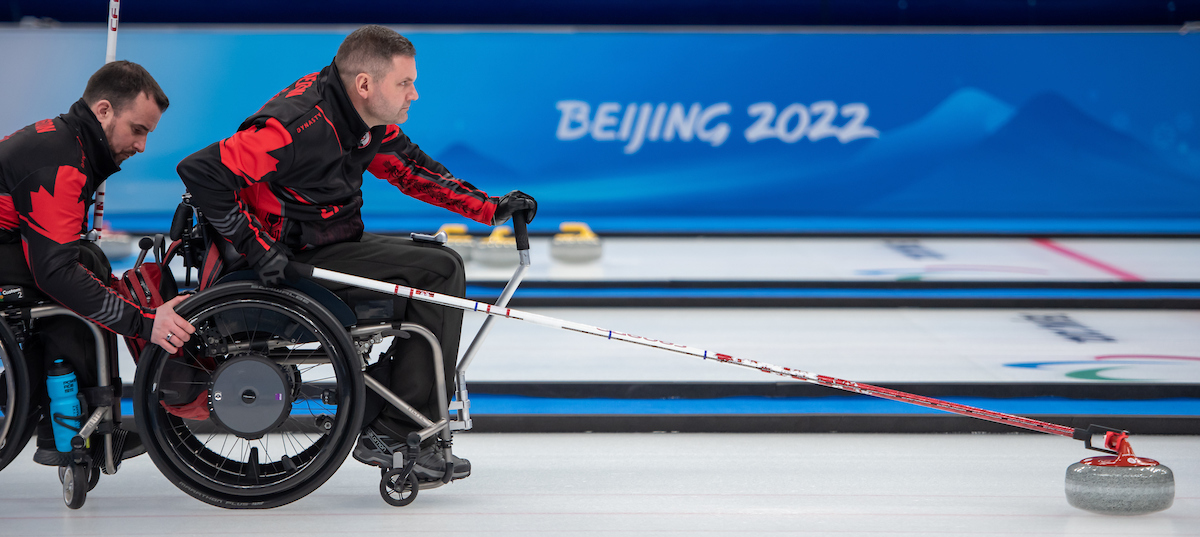
Wheelchair curling
Winter Sports

Winter Sports
In wheelchair curling each team is mixed, and one female athlete must be on the ice at all times during the competition. Teams are composed of five athletes: a lead, second, vice-skip, skip, and alternate. A game consists of eight ends. In wheelchair curling there is no sweeping, which means each throw must be even more precise. The player’s wheelchair must be stationary during the throw and the stones can be thrown by hand or given an initial push with a cue.
If the teams are tied at the completion of eight ends, extra play continues for as many ends as required to break the tie.
Wheelchair curling was introduced as a Paralympic medal sport in 2006 and Canada won the first three gold medals in 2006, 2010, and 2014. In Pyeongchang 2018 and Beijing 2022 the wheelchair curling team won the bronze medal..
Mixed doubles will be added to the program for the 2026 Paralympic Winter Games in Milan.
World Curling is the world governing body for the sport. Curling Canada is the National Sport Federation.
Wheelchair curling is generally open to people with significant impairments in lower leg/gait function, who usually require a wheelchair for daily mobility (i.e. spinal injury, cerebral palsy, multiple sclerosis, or double leg amputation). More specifically, these are athletes who are non-ambulant or only able to walk short distances. International sports classifiers determine the minimum disability and appropriate classification.